Freesias Are Not Easily Grown – Follow These Guidelines To Improve Your Chances
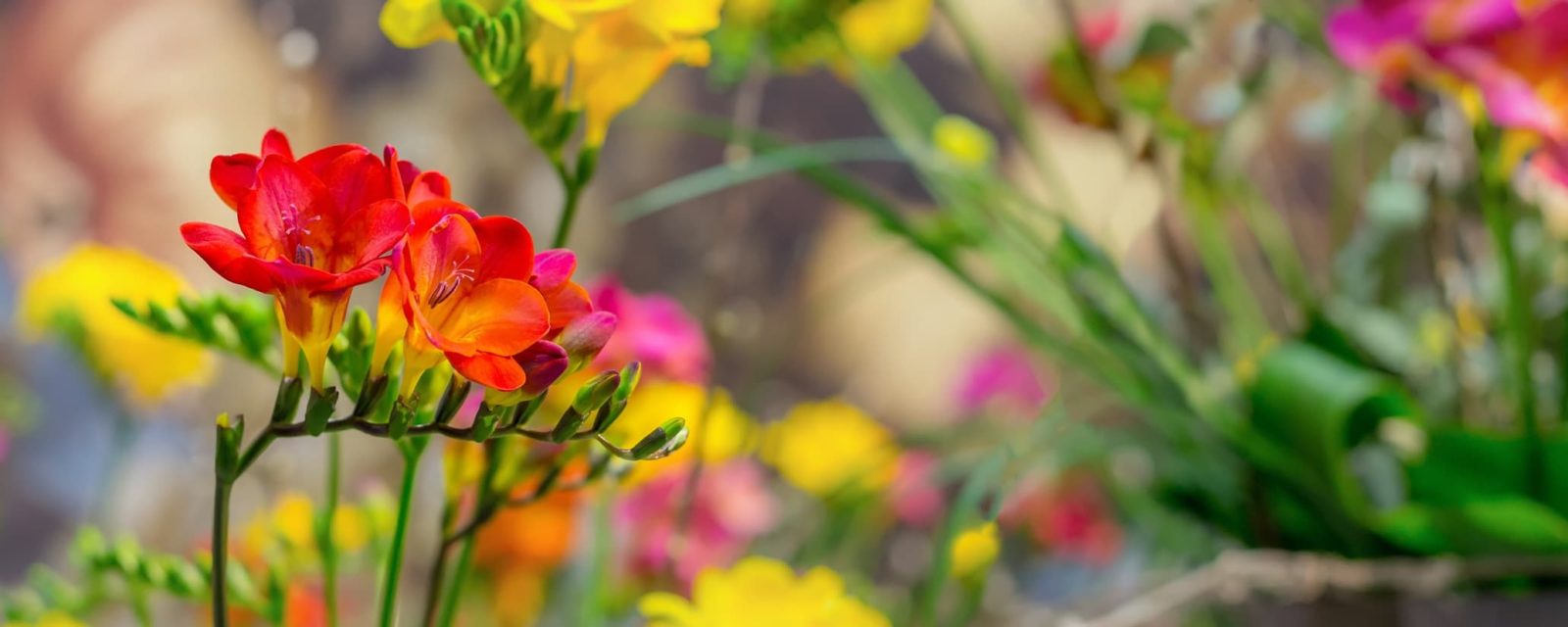
PERENNIALS > FREESIA
Reviewed By DAN ORI

Dan has over 27 years’ under his belt caring for plants and gardens. Working as a Horticultural Instructor and Consultant, he draws on a diverse range of experience that includes working as a Head Gardener, Tree Surgeon, Garden Centre Trouble Shooter, and writer of academic papers. Dan has a Level 3 Diploma in Horticulture and is currently a candidate for the RHS’s most prestigious award – The Master of Horticulture.
IN THIS GUIDE
FREESIA GUIDES
Out of Africa via the Victorian Era, Freesia, a cormous perennial, combines a fulsome appearance with refined elegance.
Consider that each flower stalk is top-heavy with eight trumpet-shaped flowers but each bloom is the embodiment of graceful refinement.
Moreover, the flowers are gently scented or intensely fragrant.
As for the colours, you get it all from cool blues to fiery oranges, plus whites and bi-colours.
Overview
| Botanical Name | Freesia |
| Plant Type | Perennial |
| Native Area | South Africa (modern hybrids cultivated) |
| Hardiness Rating | H2/H3 |
| Foliage | Deciduous |
| Flowers | Various colours |
| When To Sow (Indoors) | September, October, November |
| When To Plant | May, June |
| Flowering Months | June, July, August |
Sunlight
Preferred
Full Sun
Exposure
Sheltered
Size
Height
0.1 – 0.5M
Spread
0 – 0.1M
Bloom Time
June – August
Soil
Preferred
Chalk, loam, sand
Moisture
Well-drained
pH
Alkaline / Neutral
Freesia is a genus in the Iris family of flowering plants but in common usage, the word Freesia refers to hybrid-cultivars descending from species F. refracta, F. leichtlinii, F. armstrongii, and F. laxa.
The term Freesia is loosely defined because a little too often cultivars of other genera in the Iris Family also get lumped with Freesias.
One way or another, all species and cultivars are deciduous perennials that grow from corms that are sometimes (inaccurately) called bulbs.
They bloom in spring and summer.

Freesias are frost-tender plants and cannot be grown outdoors as easy-grow perennials in most of the United Kingdom.
If you live along the south-western and southern coast of the UK you are in luck.
But even if you don’t, with some effort you can still grow this hit from the Victorian Age and a hot favourite flower to this day.
A major reason that Freesias are so admired is their delightful scent, for which these flowers are renowned.
And belying their delicate appearance, cut Freesia blooms have vitality to spare – they will last a week to ten days in a vase.

Another plus point is that for beautiful flowering plants they are relatively pest-resistant and disease-free.
“When I was a Head Gardener of a large property with over 100 rooms, we had a small commercial glasshouse full of Freesia to provide the home with cut flowers,” shares Master Horticulturist Dan Ori.
“Although I love the flowers, I hated growing them at that scale due to the constant battle with aphids.
“In the end, we did have to reduce the number of plants and draft in some Coccinellidae (ladybirds) to help control the aphid numbers.”
You may have heard that Freesias are not easy to grow and we cannot argue that point.
But, on the other hand, their virtues are so exceptional that you may be well advised to give them a go!
Habitat & Growing Conditions
Many Freesia species are native to the Western Cape in South Africa; they grow in nature in dry regions that get winter rainfall.1Freesia. (n.d.). Kew Royal Botanic Gardens. Retrieved March 16, 2023, from https://powo.science.kew.org/taxon/urn:lsid:ipni.org:names:331198-2
Their habitats include sandy and gravelly ground, dunes and scrubland, and the edges of forests.
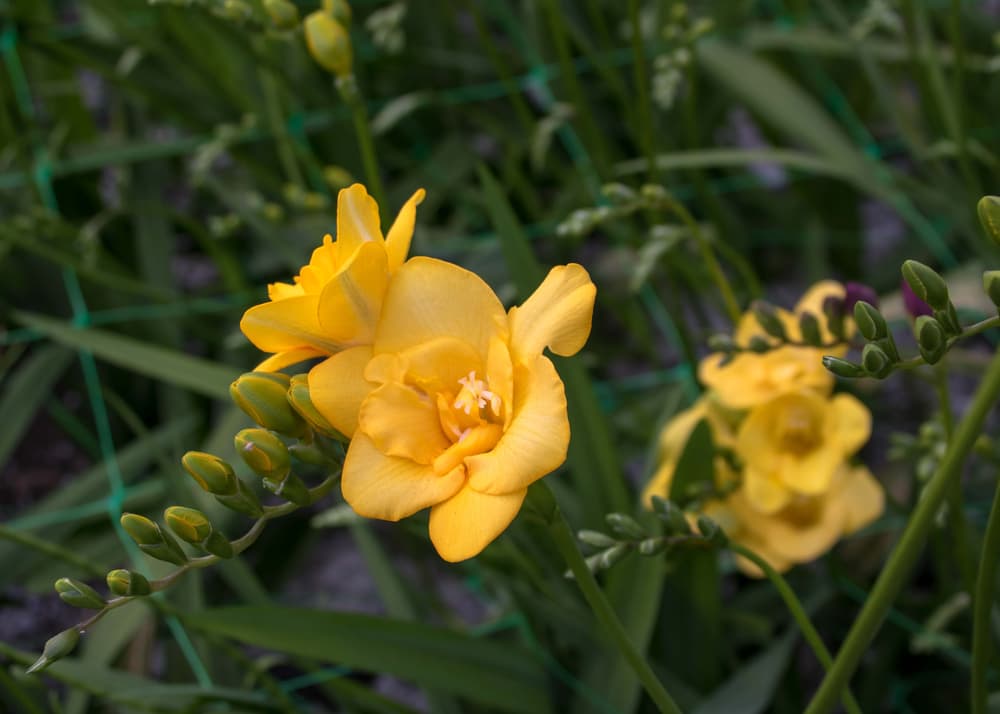
The corms regenerate in February and March, which is Autumn in South Africa, and they put up flowers in the winter months of July and August.
Temperatures of 8-10°C are the most amenable to flowering.
Despite their preference for cool temperatures, Freesias are not hardy; their hardiness rating is only H2 and H3, depending on the variety.
Where To Grow Freesia
Freesias are classic cottage garden plants. And, in all truth, they are brilliant for country estates and manors.
These plants make excellent bedding plants, either in the form of a Freesia mix or as companion plants.

Freesias and Primula Primroses, and Freesias with crocuses, are excellent combinations that will enhance the cottage garden or country garden effect.
Freesias would be well set off grown against a backdrop of Phlox.
Though Freesia varieties are not commonly considered accent plants, they can certainly be grown as houseplants in a well-ventilated spot that gets several hours of sunlight.
A pot or two of these lovely flowers will certainly light up – and also ‘scent up’ – any room as they will a balcony or patio.
How To Grow Freesia
Freesias are planted as corms but can also be grown from seeds.
Germination from seed is not straightforward, and it takes anywhere from one to four months.
Seed-grown plants focus their energies on developing their corms and do not flower for the first few years.
Aspect & Soil Requirements
In the UK, Freesias should be grown in full sun, or in full morning sun and dappled or filtered afternoon sun.
A loose and fertile sand-based soil without clay, amended with organic compost or humus will be perfect for Freesias.

Incorporate gravel or perlite as necessary to ensure excellent drainage which is a must for these plants.
Two kinds of Freesia corms are available, prepared and unprepared.
Planting
The former type are heat treated so that planting them in April will produce flowers for a long summer flowering season from July through August.
Thereafter they will revert to producing flowers in spring.
Unprepared corms can be planted in September in containers or outdoors in only the very mild regions of the United Kingdom to see blooms from April.
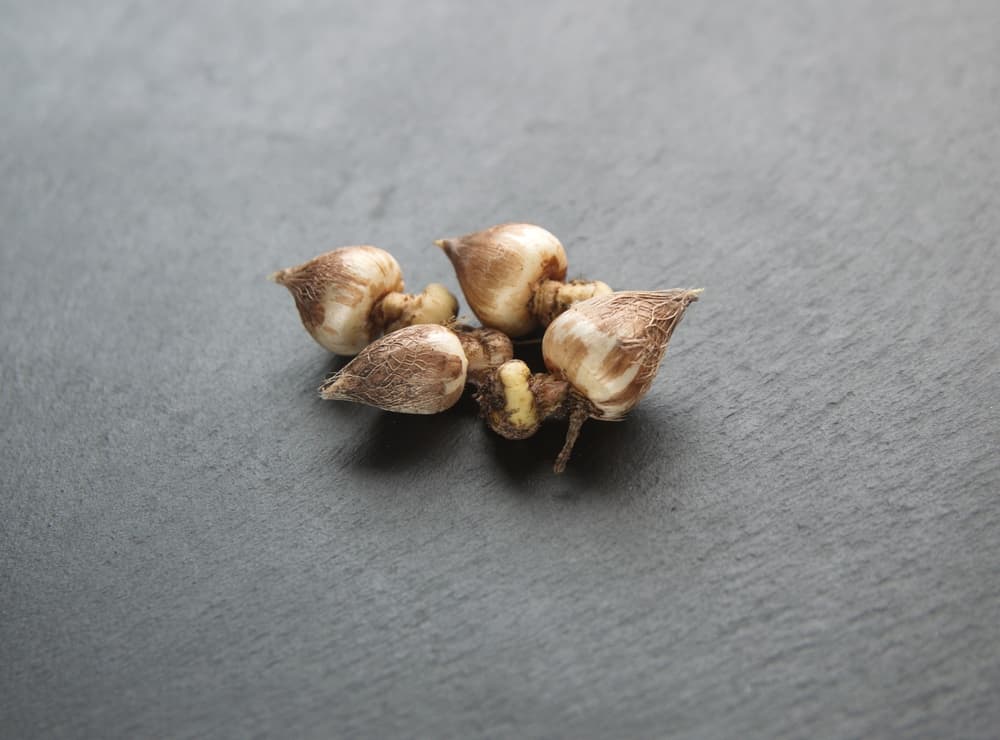
In colder regions of the country they can be planted outdoors after the last frost.
As a general rule, Freesia corms will produce flowers 12-14 weeks after planting.
Plant the corms with the pointed tip upwards in loose soil that is not densely packed.
The tips should be right at the surface of the soil which means that the corms, depending on size, would be planted at a depth of 4-6cm.
They should be spaced at 6-8cm.
Plant Care
Watering
Water well after planting – keep the soil consistently moist in the early growing stages.
Soil should neither get waterlogged nor allowed to dry out. After the plant puts up leaves, water it periodically.
Cease watering it after the flowering season is over and when the foliage has wilted and browned.
“If grown in pots, I recommend growing them in a free-draining potting mix, giving them a really good drench and not allowing them to sit in water for too long,” says Dan.
“Constant light watering may stress the plant and encourage aphids.”

Temperature
Freesias are very temperature sensitive.
For the plants to flower abundantly and produce healthy flowers, the temperature over a 24-hour period needs to be between 8-20°C with nighttime temperatures to stay between 8-13°C.
Support
Though the flower stalks have a graceful flex, the truth is that all too often (the stalks of) the newer varieties with double flowers or larger flowers cannot support a full head of flowers.
Consider utilising canes or grow-through supports to keep flower stalks from getting bent and bowed.
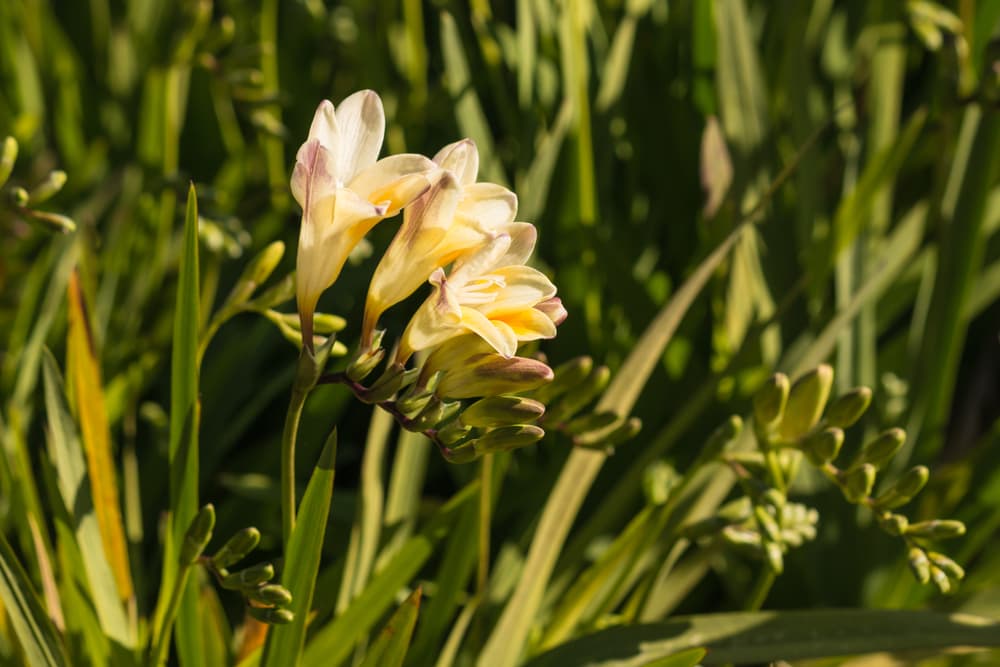
Fertilising
Feed the plants with a 10-10-10 liquid fertiliser just when the corms send up stems.
Fertilise once again just when the first buds form with a high-potassium liquid fertiliser.
It is necessary to dilute both as appropriate.
Overwintering
Freesias grown in containers can be overwintered indoors; though their foliage will have shed, the dormant corms will be protected from frosts.
If you remove corms to bring them indoors before winter, cut stems and stalks down to 2-3cm.
Place the corms in a cool, dark place so that they can dry out, then pack them lightly in sand or peat moss, put them in a mesh bag, and store in a cool (but not cold) and dry room.

Before planting the corms back outdoors after the last frost they will have to be heat-treated, howsoever amateurishly.
For at least two months before re-planting the corms will need to be kept at a temperature of about 30°C.
Keeping them on a sunny windowsill is a simple time-honoured technique that usually does the trick.
If you preserve your corms, about every four years you should separate the offsets, to be used as new corms.

Pruning
If you wish to cut these flowers, cut the flowering stalk of an inflorescence or a cluster when only one of the buds has bloomed and the rest are still half-open or are still buds.
They will open up in a vase over a few days – you can prolong vase life by changing the water daily and by cutting the stems at an angle.
Cut the flowers in the morning, preferably early to mid-morning, to further extend vase life.
Spent flowers should be cut for cosmetic reasons but not the foliage, even after it yellows.
The leaves keep producing energy to be stored in the corms.
Cut the foliage only after it has browned and died.
Common Problems
Again belying their delicate appearance, Freesias are relatively pest-free and disease-free flowering plants.
The only pest that they are susceptible to is aphids.
Other than that they may suffer from glasshouse red spider mite under glass or indoors.
Some varieties may occasionally succumb to fusarium wilt.
Aphids are treated by washing them off and applying organic products like BotaniGard ES or Safer’s soap.
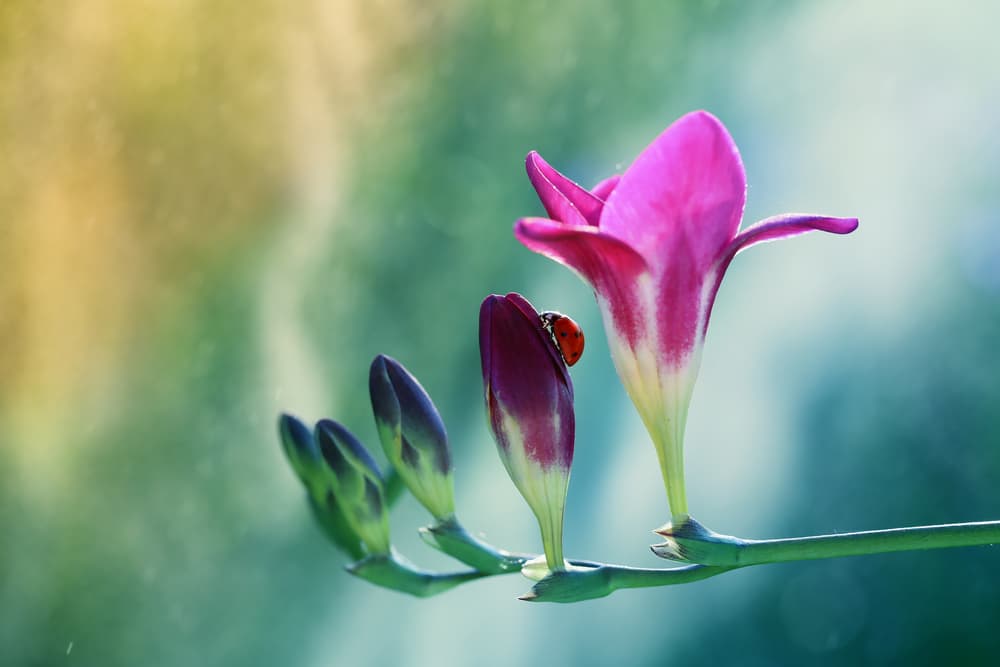
Ladybugs will help against both aphids and red spider mite.
As a first step to fighting red spider mite, try a neem oil and soap solution in soft water, and spray it on the entire plant, both to wash away the pests and to ensure they cannot return.
For a heavy localised infestation cut off the affected parts and dispose of them.
References
- 1Freesia. (n.d.). Kew Royal Botanic Gardens. Retrieved March 16, 2023, from https://powo.science.kew.org/taxon/urn:lsid:ipni.org:names:331198-2

